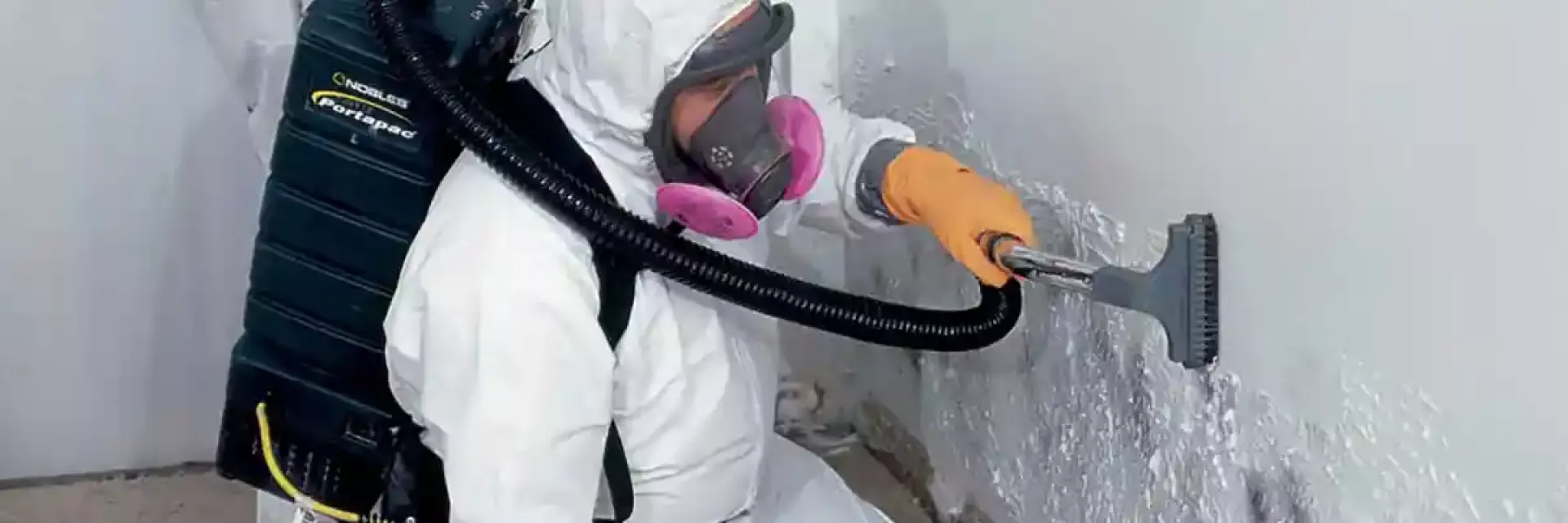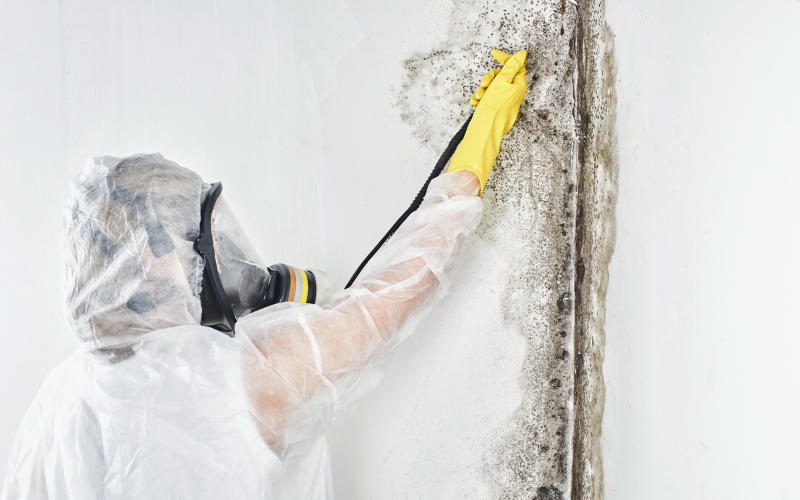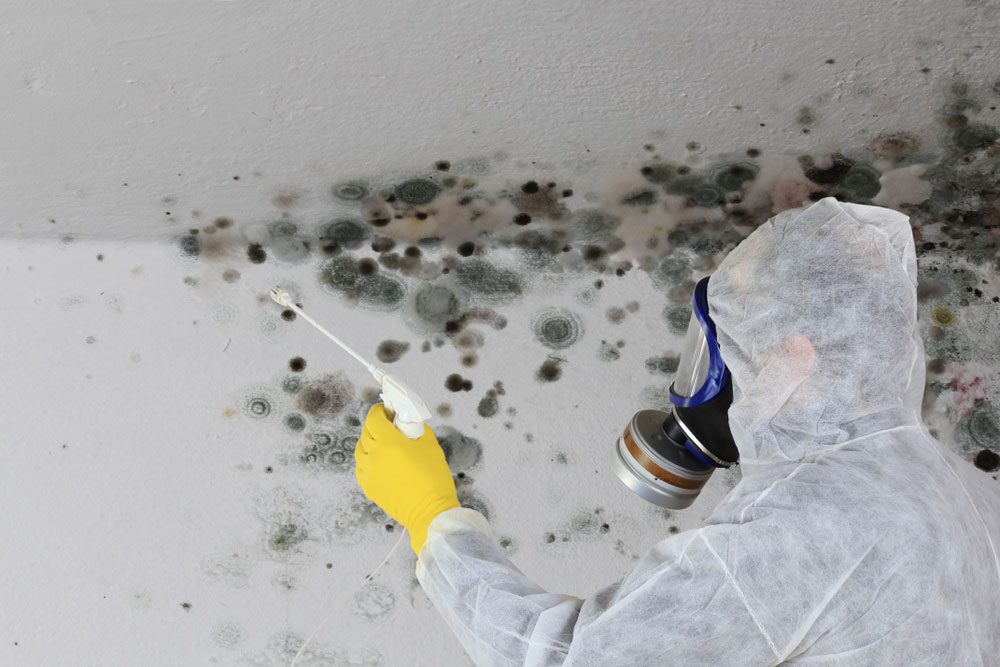Accuracy Mold Removal Strategies for Guaranteeing a Healthy Living Environment
In the world of maintaining a healthy and balanced living environment, the efficacy of mold removal techniques stands as a crucial element that requires accuracy and knowledge. Mold and mildew problems can be perilous, influencing indoor air quality and presenting dangers to both residential or commercial property and health and wellness. Resolving mold growth exceeds plain surface area cleansing; it demands a detailed technique that incorporates evaluation, targeted techniques, and the usage of sophisticated technologies. By discovering the ins and outs of mold remediation techniques, one can get insight into securing against mold-related problems and cultivating a healthier habitat.
Understanding Mold Development Aspects
Understanding the key elements that add to mold and mildew growth is necessary in creating reliable approaches for mold and mildew removal. Mold needs 3 main elements to prosper: moisture, suitable temperatures, and organic material for food. Wetness is maybe the most critical factor as mold spores can quickly spread out and conquer in damp settings. Leaks, floodings, high humidity levels, or condensation provide the necessary moisture for mold growth. Temperature likewise plays a significant role, with a lot of molds preferring temperatures in between 60-80 ° F(15-27 ° C) Lastly, mold and mildew feeds upon organic materials such as timber, paper, drywall, and materials.

Assessment of Mold Infestations
Having determined the key variables that contribute to mold and mildew growth, the following important action is evaluating the level of mold infestations within a building. Mold and mildew analysis entails a comprehensive inspection to identify the type of mold and mildew existing, the influenced locations, and the severity of the problem. Professional mold assessors use a combination of aesthetic examination, dampness meters, thermal imaging video cameras, and air tasting to collect data on the mold problem.
Aesthetic examination is often the very first step in analyzing mold and mildew infestations, where professionals visually check out locations vulnerable to mold growth, such as bathrooms, attic rooms, and basements. This assists recognize visible mold growth and areas with indicators of water damage or high wetness degrees. Wetness meters are after that utilized to spot moisture levels in structure products, aiding in locating covert mold and mildew growth behind wall surfaces or ceilings.
Additionally, thermal imaging electronic cameras can be utilized to find temperature level distinctions that may show wetness issues promoting mold and mildew development. Air sampling is another important technique utilized to collect airborne mold and mildew spores, giving information on the focus and types of mold present in the indoor setting. By utilizing these analysis approaches, professionals can accurately examine the mold invasion and develop an efficient remediation strategy to make sure a healthy and balanced living atmosphere.

Applying Targeted Removal Techniques
To efficiently resolve mold invasions, executing targeted remediation strategies is vital for eliminating the origin of mold and mildew growth and ensuring a mold-free atmosphere. These techniques involve a methodical method tailored to the particular mold and mildew issues determined during the assessment phase. By targeting the hidden aspects contributing to mold and mildew development, such as dampness breach, inadequate air flow, or structure product problems, removal efforts can be much more reliable and precise.
One targeted removal approach is to address water leakages without delay to avoid moisture buildup, which is a main motorist of mold proliferation. This may include repairing pipes leakages, improving drain systems, or enhancing waterproofing actions. In addition, boosting ventilation in damp locations can help in reducing moisture levels, creating a setting less helpful to mold and mildew development.
In addition, targeted remediation techniques might include removing and changing mold-infested products, such as drywall or insulation, and using antimicrobial therapies to inhibit future mold development. Normal surveillance and maintenance are important to sustaining a mold-free atmosphere following removal efforts - local mold remediation philadelphia. By executing these targeted methods, homeowner can successfully battle mold and mildew invasions and promote a healthier living environment
Using Advanced Mold Elimination Technologies
Advanced mold and mildew removal modern technologies play an essential function in dealing with mold and mildew problems successfully and thoroughly. These systems can capture and filter out mold spores and other air-borne fragments, dramatically reducing the spread of mold and mildew during removal.
Moreover, advanced mold and mildew elimination technologies consist of infrared cameras that can discover covert click resources wetness resources within ceilings or walls, assisting in the accurate identification of locations vulnerable to mold growth. mold remediation philadelphia. This modern technology enables remediation professionals to target afflicted areas much more precisely, causing a more comprehensive elimination procedure
Ultraviolet (UV) light therapy is one more ingenious modern technology utilized in mold remediation. UV light can kill mold and mildew spores and prevent their growth, specifically in hard-to-reach or unattainable locations. This method is non-invasive and ecologically friendly, making it a recommended option for mold elimination in sensitive environments. By leveraging these advanced technologies, mold and mildew removal experts can successfully get rid of mold and mildew infestations and develop a much healthier living environment for occupants.
Protecting Against Future Mold And Mildew Recurrences
With the effective removal of mold invasions making use of innovative technologies, the focus currently shifts in the direction of executing durable techniques to avoid future mold reappearances. Preventing mold and mildew from reoccurring is important for keeping a healthy and balanced interior setting. One crucial method is to deal with any kind of underlying moisture issues in the structure. Routine evaluations for leaks in pipes, roofings, and windows can assist identify and deal with resources of excess wetness that contribute to mold and mildew development.
Correct air flow is another essential facet of mold and mildew prevention. Guaranteeing ample air movement in all locations of the structure can help in reducing humidity degrees and avoid dampness build-up. Making use of dehumidifiers in damp spaces such as basements can also aid in regulating moisture levels.
Keeping cleanliness and immediately resolving any type of water damage or spills can better help avoid mold and mildew development. Normal cleaning routines must consist of cleaning, vacuuming, and cleaning down surfaces to protect against the accumulation of mold and mildew spores.
Educating occupants regarding mold prevention techniques, such as appropriate ventilation and dampness control, can also contribute to an aggressive technique in protecting against future mold and mildew concerns. By applying these approaches, the threat of mold and mildew recurrences can be considerably reduced, resulting in a healthier living atmosphere.
Conclusion
By understanding mold growth aspects, examining invasions, executing targeted strategies, making use of innovative Related Site elimination technologies, and avoiding future recurrences, one can properly combat mold issues. It is vital to prioritize mold remediation to make certain the well-being of passengers and avoid possible health hazards associated with mold and mildew direct exposure.
